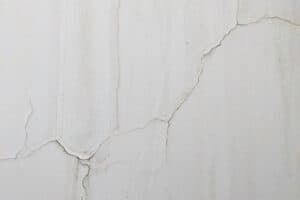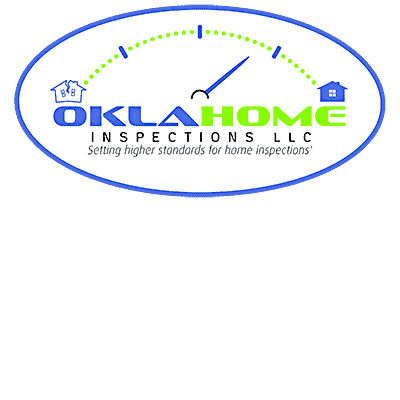
19 Apr What Are The Symptoms of Radon In Your Home?
How To Tell If There Are Symptoms of Radon In Your House?
Are you concerned that your home may be impacted by radon gas? You’re not alone. Many homeowners don’t even realize they have high levels of this naturally occurring radioactive gas in their living spaces, but radon can cause serious health problems if it isn’t detected and mitigated right away. So what are the symptoms of radon in your home?
This can vary depending on your individual situation, and often the only way to know for sure is by having a professional radon test done. However, there are some signs that may indicate high radon levels:
- Unexplained illness or respiratory problems such as coughing, sneezing, asthma attacks, and bronchitis.
- An unpleasant, musty smell coming from your basement or other lower-level areas of your home.
- Discolored walls and water stains on your floors or ceiling.
- Dust that has an unusual color, such as yellowish or orange.
- A feeling of humidity in the air that never seems to dissipate.
If you notice any of these signs, it’s important to have your home tested for radon as soon as possible. In this blog post, we’ll explain exactly what radon is and provide a comprehensive overview of the symptoms associated with its presence so that you know how to protect yourself and your loved ones from potential harm. So read on to learn more about one of the most widely overlooked yet potentially dangerous air pollutants out there!
What Is Radon And Its Effects On Your Health
Radon is a naturally occurring gas that we cannot see, smell, or taste. It is produced by the breakdown of uranium in rocks, soil, and water. While it may sound harmless, radon exposure can have detrimental effects on your health. Long-term exposure to elevated levels of radon gas can increase your risk of developing lung cancer. In fact, radon exposure is the second leading cause of lung cancer in the United States. The American Lung Association recommends testing your home for radon levels to ensure that you and your family are breathing safe, healthy air. It’s important to take radon seriously and take the necessary precautions to protect yourself and your loved ones.

Identifying Radon In Your Home
Radon is a harmful gas that often gets overlooked when it comes to home safety. It is colorless, odorless, and tasteless, making it difficult to detect without proper testing. That’s why it’s important to identify whether your home has a radon problem or not. Exposure to radon gas has been linked with lung cancer, making it a serious health concern. Fortunately, there are simple and affordable tests that you can do to determine whether your home has high levels of radon. By taking action and testing for radon, you can ensure the safety of yourself and your loved ones.
Types Of Tests To Detect Radon Levels
Have you ever wondered what types of tests are available to detect radon levels in your home? Well, there are a few options!
- The most common test is a passive test, which involves leaving a small device in your home for a specified period of time. This device will then be sent off to a lab for analysis.
- Another option is an active test, which uses a continuous monitor to detect radon levels in real time. This is a great option if you want to see immediate results.
- Finally, there is also a short-term test that can give you a quick snapshot of your radon levels.
No matter which test you choose, it’s important to make sure you’re taking steps to protect yourself and your loved ones from this dangerous gas.

The Health Risks of Long-Term Radon Exposure
Long-term exposure to radon poses a serious health risk that should not be taken lightly. This harmful gas is odorless, tasteless, and invisible, making it impossible to detect without proper testing. As it emanates from the ground and seeps into homes, radon can accumulate to dangerous levels, causing lung cancer and other respiratory illnesses. Even if you live in an area with low radon levels, it’s important to test your home regularly, as radon can vary from house to house. By taking proactive measures to monitor your radon levels and mitigate any problems, you can protect both yourself and your loved ones from this silent but deadly threat.
Radon Levels in Old Homes Versus New Homes
When it comes to purchasing a home, it’s important to do your due diligence in researching every aspect of the property. One factor that may not always be top of mind is the potential for radon gas. Radon is a naturally occurring gas that can become trapped in buildings, and prolonged exposure can cause lung cancer. Studies have suggested that older homes are more likely to have higher radon levels than newer homes. This is due to advances in construction techniques that allow for better ventilation and mitigation of radon gas. So, if you’re in the market for a home, be sure to have a radon test conducted, especially if you’re considering an older property. It’s worth the extra precaution to ensure the safety of you and your family.

Simple Steps to Take if You Suspect High Radon Levels in Your Home
Are you worried that your home may have high levels of radon? Don’t worry, you’re not alone. In fact, one in fifteen homes has elevated levels of this dangerous gas. But the good news is that there are simple steps you can take to find out if your home is affected and what you can do about it. Start by purchasing a radon testing kit, which you can easily find online or at your local hardware store. These kits are easy to use and will give you a reading within a few days. If the test indicates high levels of radon, the next step is to contact a certified radon professional to evaluate your home and recommend the best course of action. Don’t put your health at risk, take action today and ensure the safety of your home and family.
The Bottom Line
After reading this blog post, you should have a better understanding of the risks radon brings to your home and the health of those living inside it. Knowing what to look for and the steps to take if you suspect there are high radon levels in your home can save your family from experiencing any long-term negative health effects from radon exposure. In addition, note that old homes tend to test higher for radon than new homes and are therefore particularly susceptible.
A professional home inspection is a great way to detect any radon in an unbiased manner. And remember, radon isn’t something to mess around with – once detected, immediate action needs to be taken such as sealing cracks, installing ventilation systems, and replacing windows. All of these combined will reduce levels and make your home much safer. So what are you waiting for? Get a professional home radon inspection today!
Related Questions
Does a standard home inspection test for radon?
Yes, a standard professional home inspection will usually test for radon gas levels in the home. The inspector will use specialized equipment to detect the presence of radon so that any potential problems can be addressed. This is an important part of the overall home inspection process and should not be skipped.
What if I am renting and suspect radon?
If you are renting a home and suspect there may be high radon levels, the first thing to do is contact your landlord. Let them know that you are concerned about the potential for exposure to this dangerous gas and would like them to consider having the property tested. Many landlords will be happy to comply as it can help protect both of you from potential health. If the landlord is uncooperative, you may need to contact your local public health department for assistance. They will be able to provide more information and resources about testing radon levels in rental properties.




Sorry, the comment form is closed at this time.